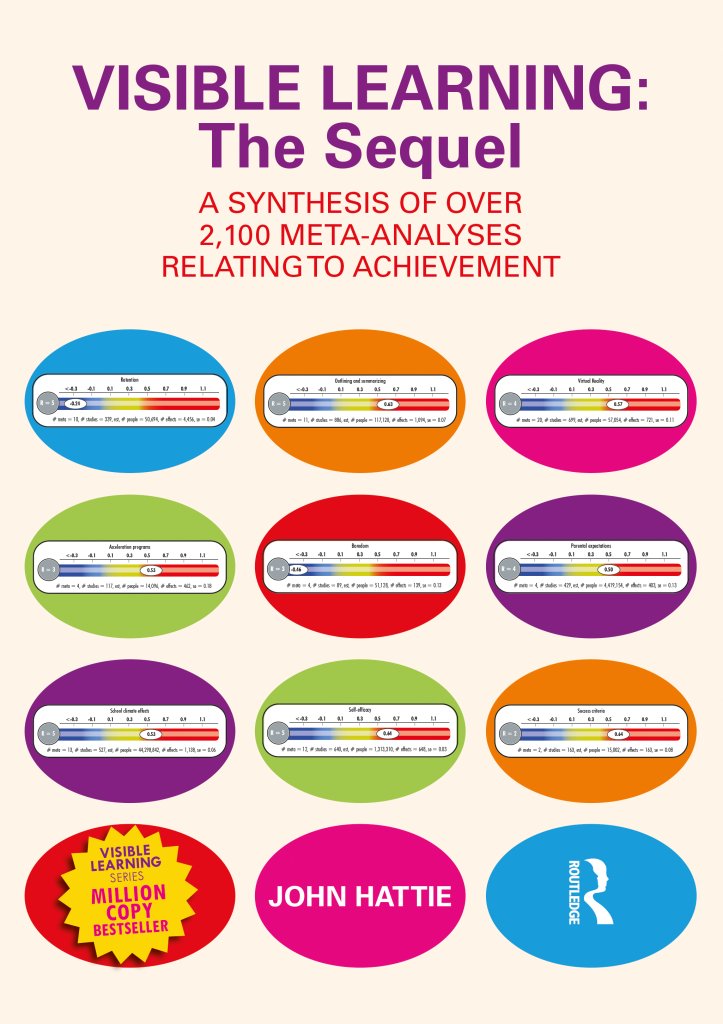How Great Teachers Think
John Hattie writes that the secret to great teaching lies in evaluative thinking—it’s less about what teachers do and more about how they think about what they do.
Your content has been saved!
Go to My Saved Content.The most critical teacher influences relate to their having high expectations for all students, not labeling students, seeing differentiation as allowing for different paths and different times for all to attain the success criteria, being high in verbal ability (especially in their early years of teaching), being seen by students as highly credible influences on their learning and achievement, having high levels of clarity such that student all know what they are learning and why they are learning, and knowing their progress in their learning. Finally, the greatest influences are when teachers work together to evaluate their beliefs and evidence of impact, seek critique and alternative explanations of their impact, and use microteaching to collectively review this impact on students.
While there are no metas on the nature of thinking used by teachers, the claim is that there are particular ways of thinking that demarcate the more from lesser effective teachers. We call this evaluative thinking (Rickards et al., 2021). As Scriven (1991) noted, the core evaluative thinking skills are critical thinking, reasoning, and understanding others (how they think, reason, judge, interact). In education, this evaluative thinking is focused on maximizing our impact on the learning lives of the students, which thence includes making classrooms inviting places to learn, developing a climate of fairness, developing respect for self and others, and ensuring the focus is on improvement in learning and student character (see Hattie & Larsen, 2020). We identified five core evaluative thinking skills:
1. Evaluative thinking involves invoking reasoning and critical thinking in valuing evidence, leading to where-to-next recommendations.
2. Evaluative thinking involves addressing the fidelity of implementation, continually checking for unintended consequences, and allowing for adaptations to maximize the value of the outcomes.
3. The focus of evaluative thinking is specific to the major decisions each profession aims to make: for teachers, it is maximizing the impact on the learning lives of students.
4. Evaluative thinking involves investigating potential biases and confounding factors that may lead to false conclusions.
5. Evaluative thinking relates to understanding others’ points of view, leading to judgments of value or worth.
Thus, educators with high levels of evaluative thinking have greater pattern recognition, are more adept at checking biases and constraints, are more able to monitor their and others’ (e.g., their peers and students) judgments, and are more likely to seek alternative actions. As a result, they can be slower to come to problem representations and conclusions, try to see the world through other eyes, check back with the problem statement more regularly, and are focused on becoming a learning expert.
Every year, a student engages in a huge gamble as to who is at the front of their class—will it be a teacher who has a major positive influence or a teacher who has a less-than-average although positive influence? Will it be a teacher who engages in evaluative thinking or one who wants to cover the curriculum? The mantra is that every student should have a great teacher by design, not by chance. A great teacher is not defined by the teaching methods they use, their personality, their initial teacher education program, or necessarily their subject matter knowledge.
Instead, a great teacher is determined by their impact on all students, engaging in both knowing-that and knowing-how notions in lessons, and ensuring and knowing that all are gaining more than a year’s growth for a year’s input. We know quality teachers more by how they think and seek critique about their impact on students than by what they do and know.

Teachers’ initial teacher training programs have little impact on how well teachers influence their students’ achievement. Maybe subsequent effects (e.g., the experience of the first classroom years) wash out this earlier training. The low quantity and quality of evidence of teacher training should be a major embarrassment for these institutions, who constantly ask for more years, more resources, and more influence. Teacher education may be more successful if it places more emphasis on learning and teaching strategies; developing teachers’ conceptions of teaching as an evidence-based profession (learning from errors as much as from successes); creating an appraisal system that involves a high level of trust and dependence on observed or videotaped reflection/evaluation of practice; and providing beginning teachers with a range of different teaching methods to use when current ones do not work. In addition, it may be more successful if it reintroduced microskills teaching methods, which have demonstrably positive effects on new teachers; developed teachers’ understanding of different ways to teach surface, deep, and conceptual knowledge; demonstrated how teachers could build positive relationships with all students; and showed how evaluation and assessment of students provide effective feedback to teachers about how well they are teaching, who they have not taught so well, and where they need to reteach.
One way forward is to ask teacher education programs to articulate a set of graduating standards and then evaluate the nature and quality of evidence that all students meet these standards. Suppose employers and independent educationalists sit with the education program academics in making these decisions. In that case, there is a higher likelihood that these programs will improve to concentrate on training new teachers to affect students’ learning.
It is difficult to find evidence that subject matter knowledge is important. This is a conundrum. The claim is that those with high levels of subject matter knowledge are more optimally placed to understand the content, the likely errors and misconceptions, and the optimal progressions of surface and deep learning in that content. Such teachers are better placed to provide feedback as students struggle and help move them from their current understanding to deeper and more richly constructed views of the content. It would be expected that students are more likely to become passionate about and enjoy the subject as they master the content, as opposed to those students who learn in a minimax fashion to gain knowledge and facts to pass the test, complete the assignment, and move on to whatever is the next content prescribed for them. But the evidence is lacking for these claims. We may need to ask what minimum subject matter knowledge is needed to be an accomplished teacher and how we can optimize the teaching strategies of those teachers with greater subject matter knowledge. The hunch is that there needs to be alignment between the higher levels of content knowledge and the proportion of surface and deep learning. It is likely that where surface dominates the teaching methods, then subject matter knowledge matters little.
So it is teacher beliefs more than the methods or content that matter. It is less about what teachers do and more about how teachers think about what they do. Teachers walk into a classroom with conceptions of teaching, learning, curricula, assessment, and their students (Brown, 2011 ; Witter, 2021). We need to understand these conceptions better, as it seems they are powerful moderators on the success of these teachers. Low expectations of the students’ success are a self-fulfilling prophecy. It appears that expectations are less mediated by between-student attributes (gender, race, physical attractiveness) than by whether they are held (high or low) for all students. How to invoke high expectations seems critical, and this may require having more in-school discussion of appropriate benchmarks across grades and seeing evidence of performance before starting the class or year (Nuthall, 2007, shows half of all material taught in any class is already known by the stu-dents); so much of the early months of the year involves trial and error, as teachers find out proficiencies of students—information which could have more readily been garnered by reviewing student records and having a discussion with previous teachers.
The greatest single issue facing the further enhancement of students is the need for teachers to have common conceptions of progress and standards. Moderating standards and expectations across teachers (and schools) is essential to student growth. When a student moves from one teacher to another, there is no guarantee that they will experience increasingly challenging tasks, have a teacher with high expectations of how to progress up the curricula, work with a teacher who will grow the student from where they are as opposed to where the teacher believes they should be at the start of the year, and experience a teacher with high levels of evaluative thinking.
My colleague Russell Bishop (2019) moves around classes asking students, “Does your teacher like you?” and so many ethnic minority students (in New Zealand) say no, but the white students say yes. When teachers are shown the results of surveys, they are often astonished—primarily because they assumed that the relations were positive, looked for cues that all was well, and rarely saw the classroom through the eyes of the students. The powerful effect of Bishop’s work is that, after seeing these results, the teachers were quick to change their practices. Professional learning that questions assumptions and the teacher’s theories of practice can be very effective.
The power of positive teacher-student relationships is critical for learning to occur. This relationship involves showing students that the teacher cares for their learning as a student and can “see their perspective, communicate it back to them so that they have valuable feedback to self-assess, feel safe, and learn to understand others and the content with the same interest and concern” (*Cornelius-White, 2007, p. 123). Then the powers of developing a warmer socioemotional climate in the classroom and fostering effort and, thus, engagement for all students are invoked. This requires teachers to enter the classroom with certain conceptions about progress, relationships, and students. It requires them to believe that their role is that of a change agent—that all students can learn and progress, that achievement for all is changeable and not fixed, and that demonstrating to all students that they care about their learning is both powerful and effective.
